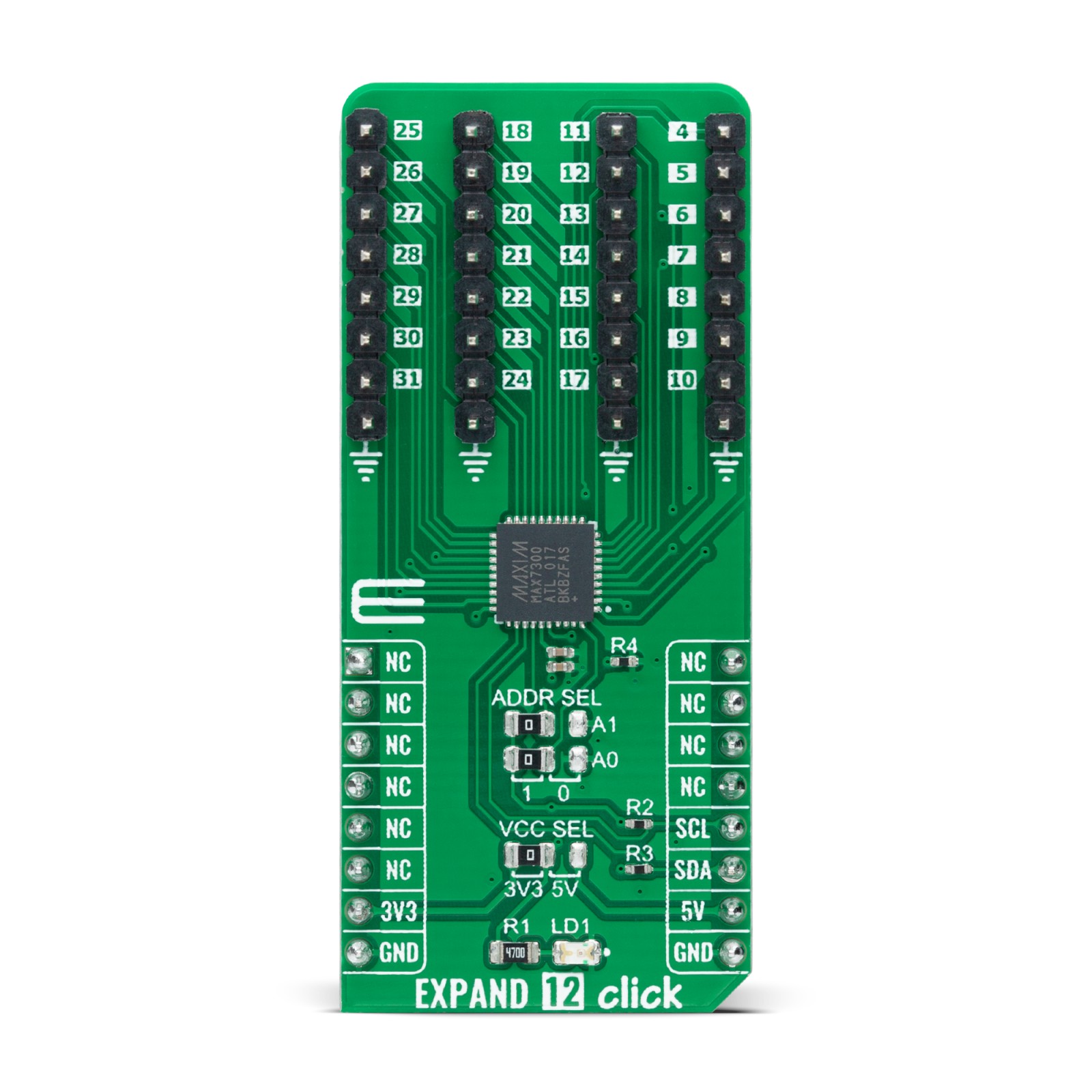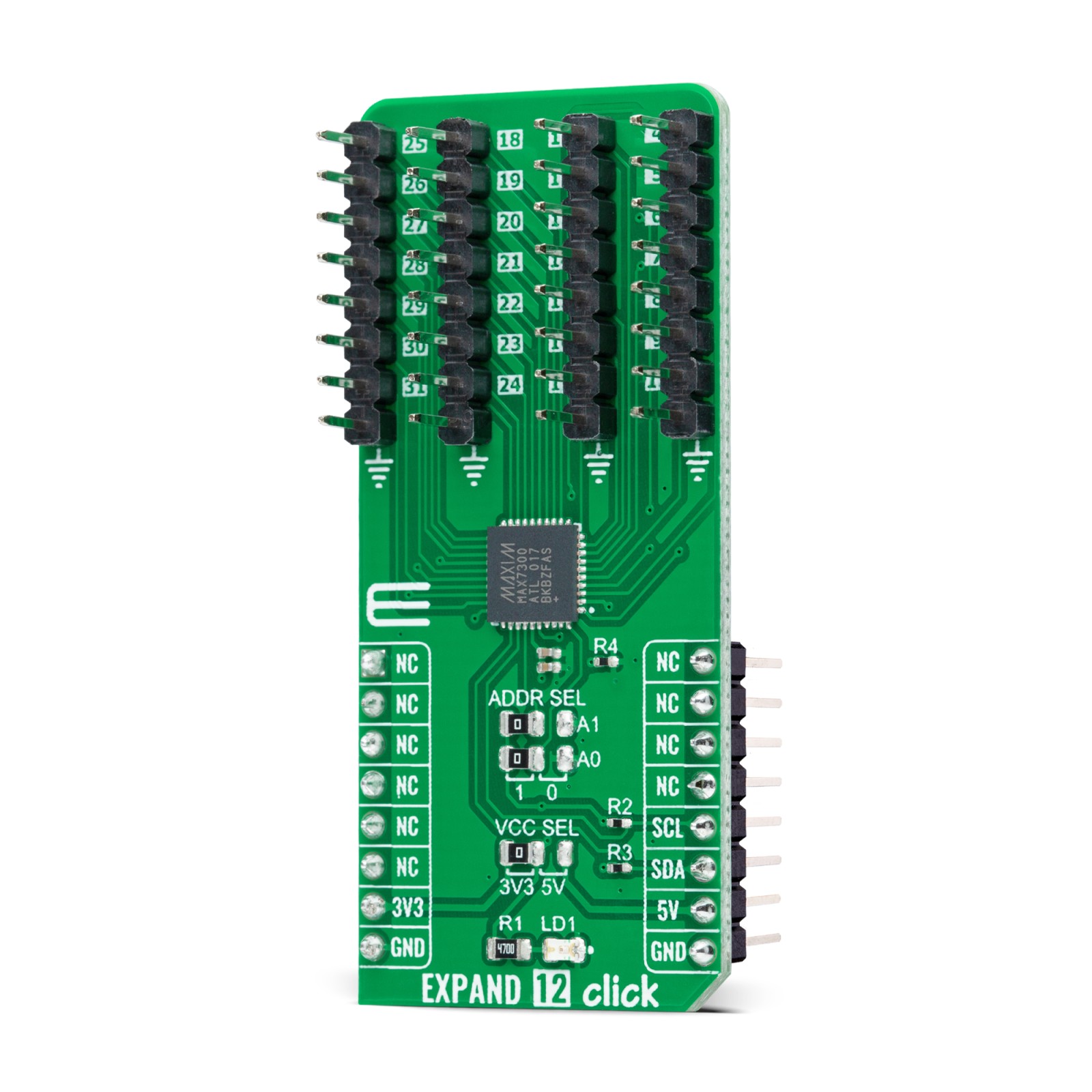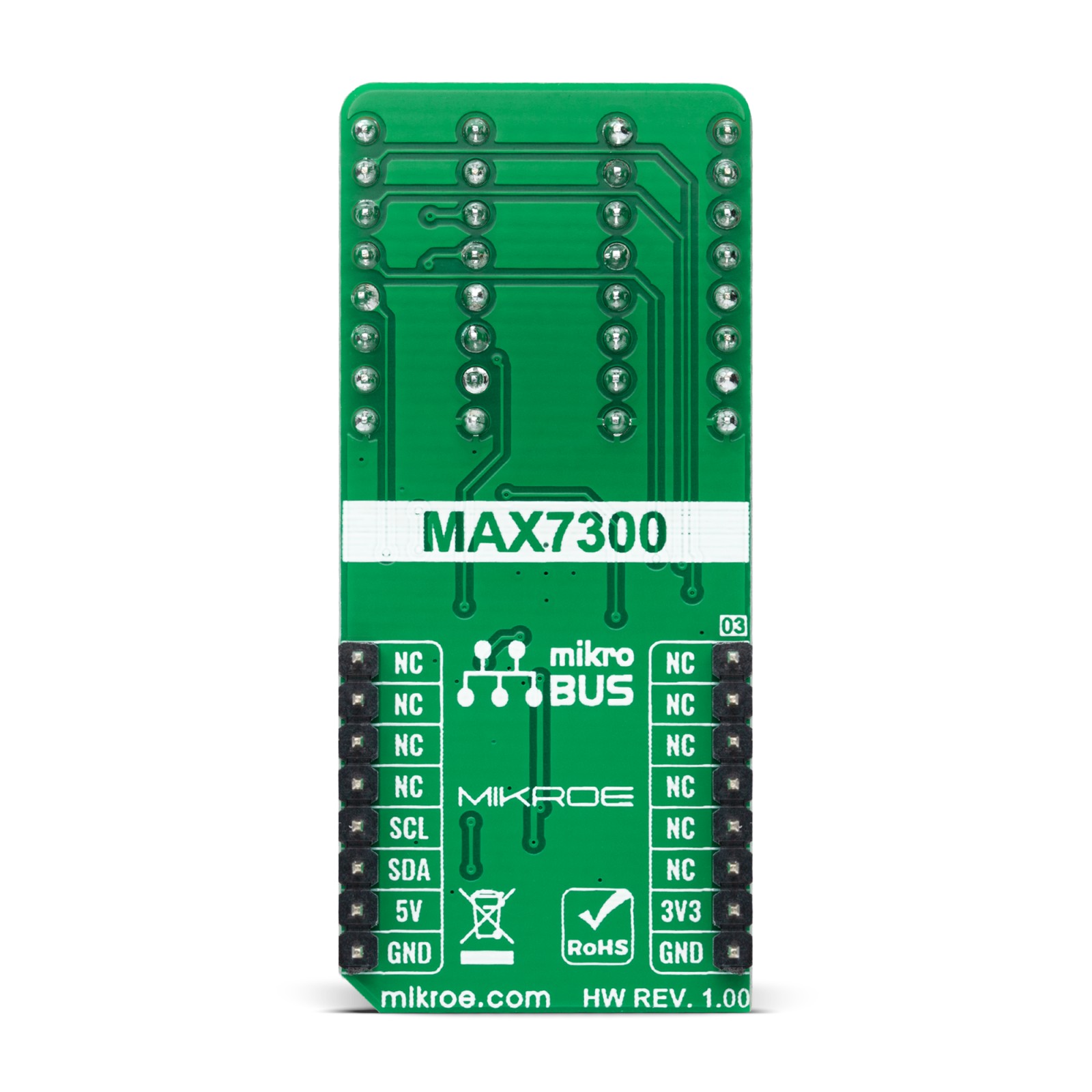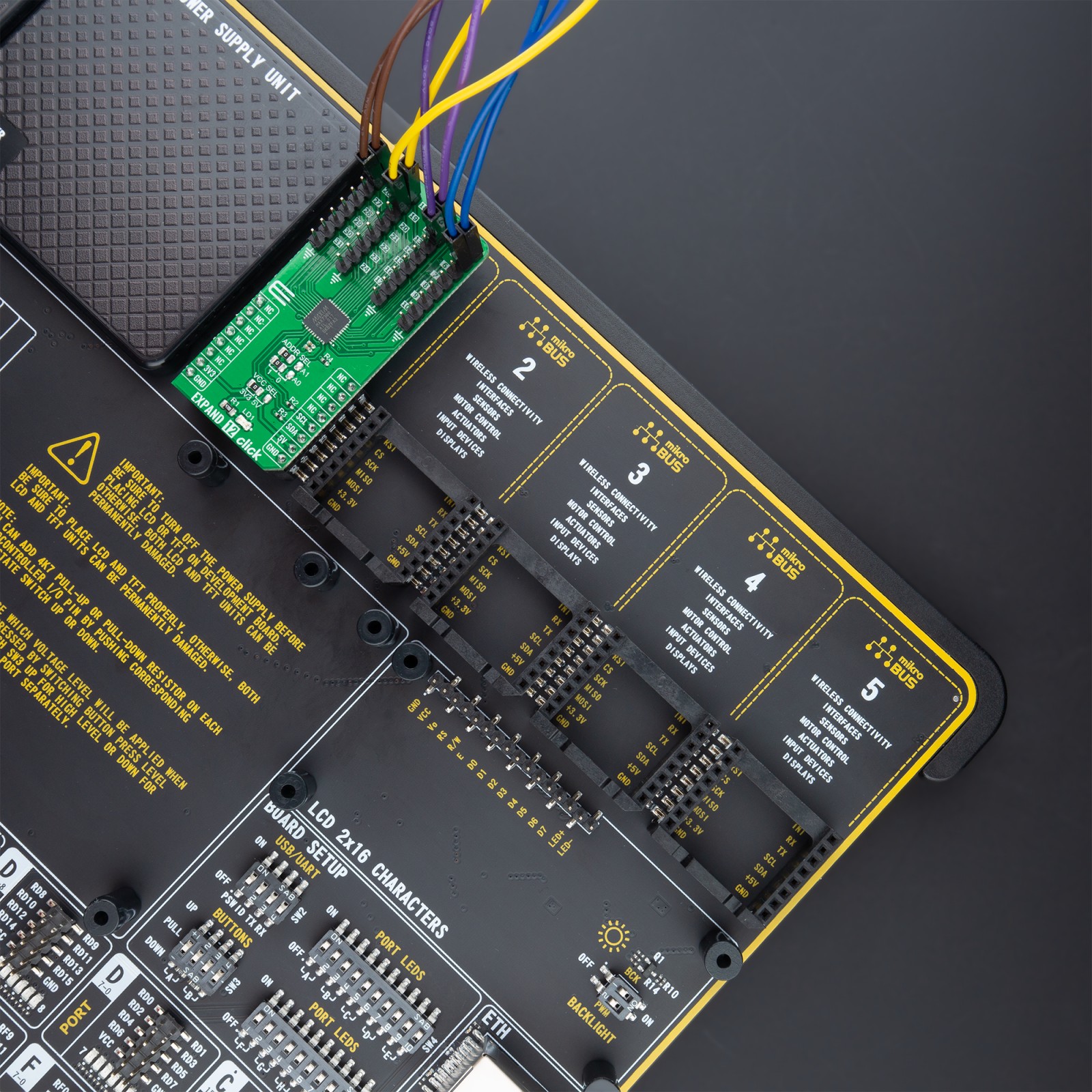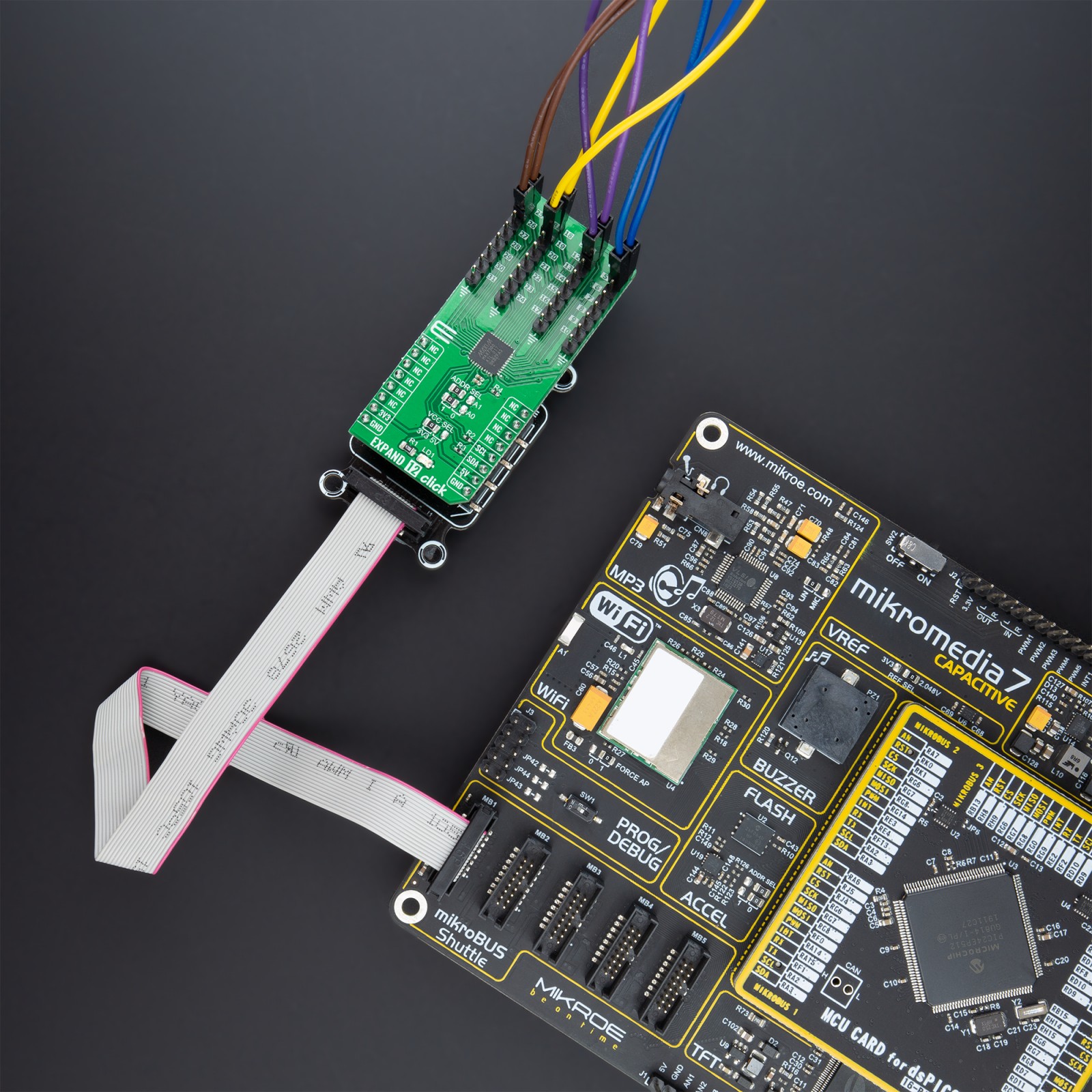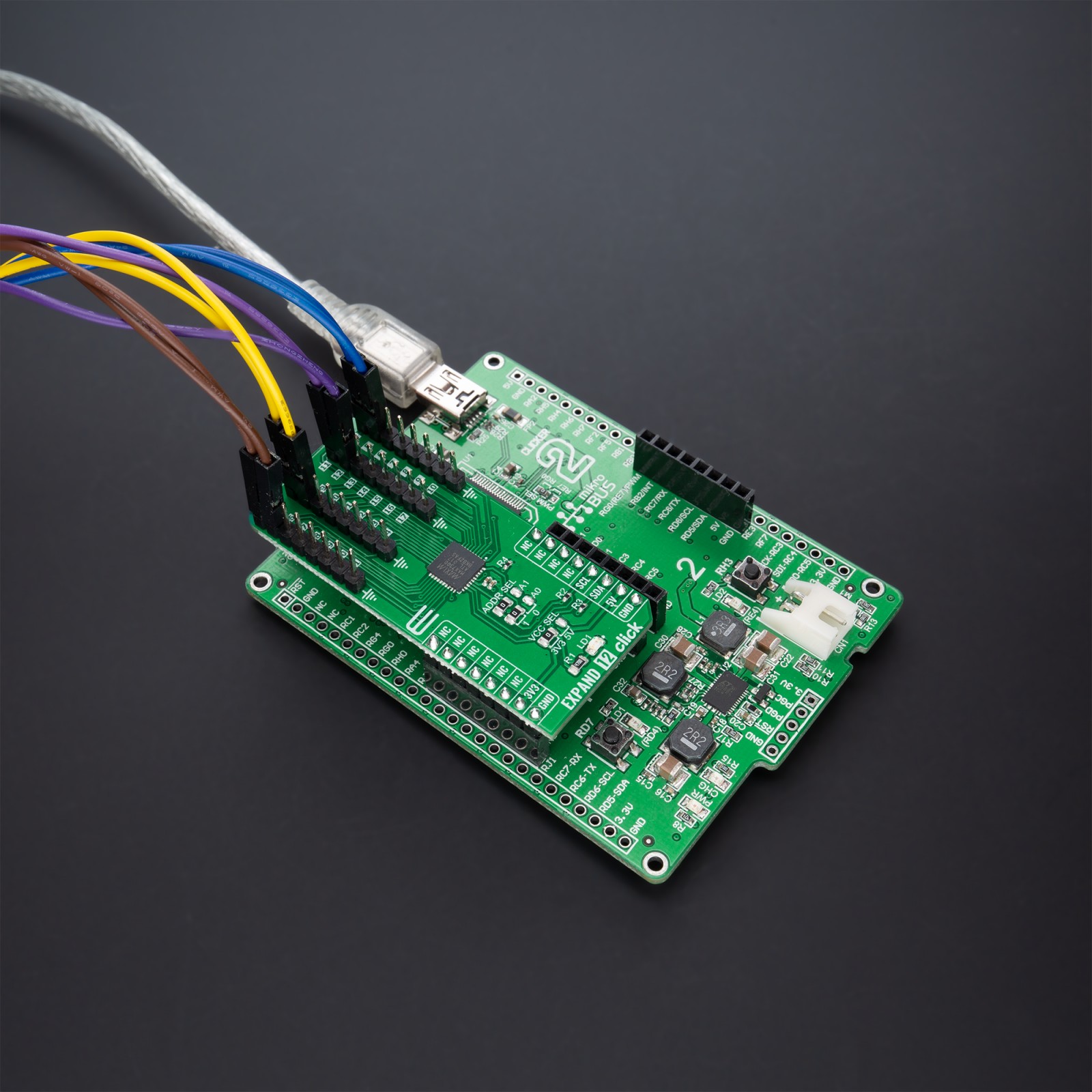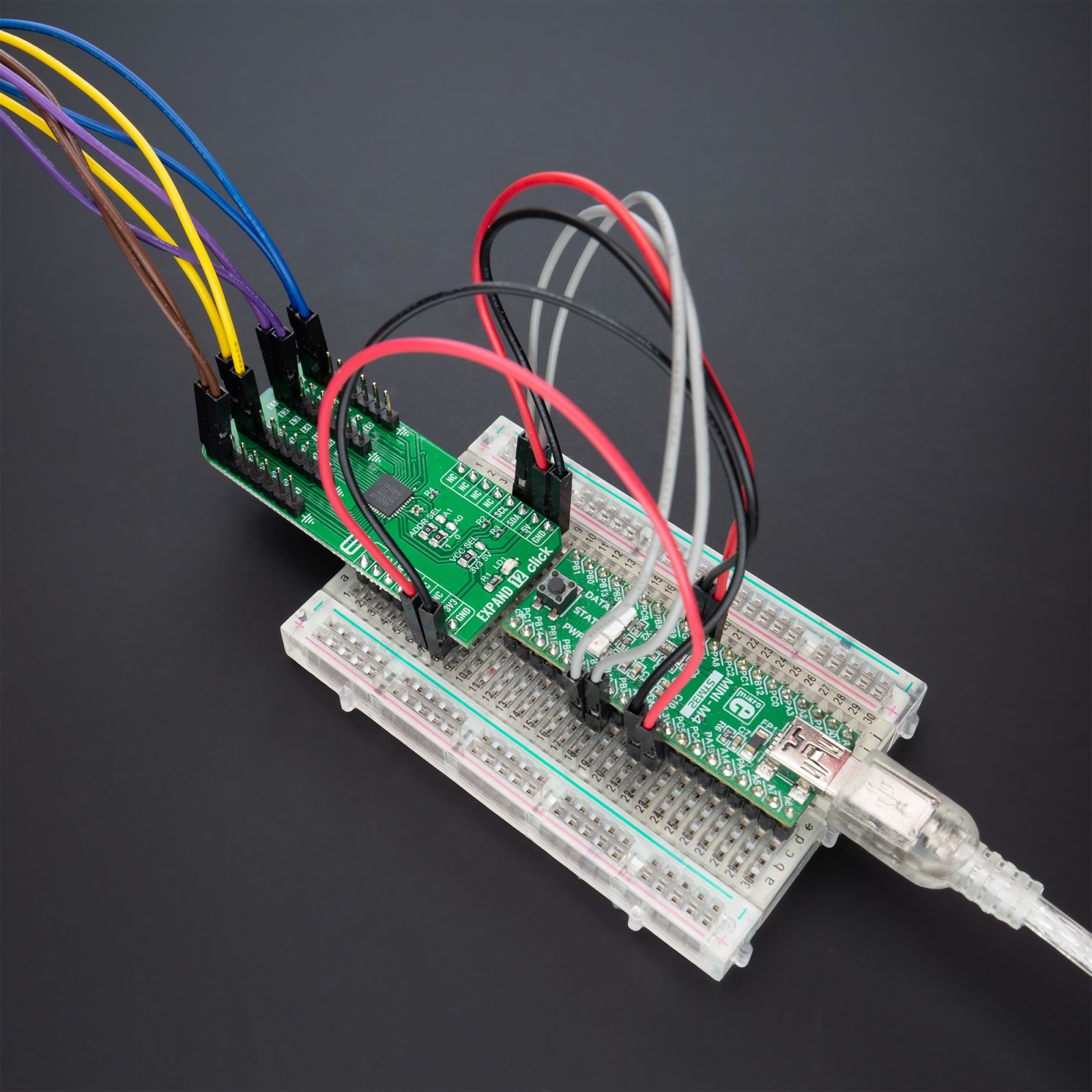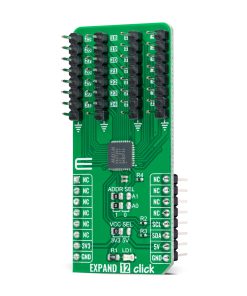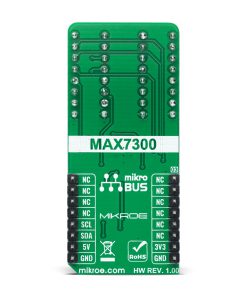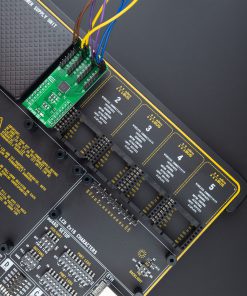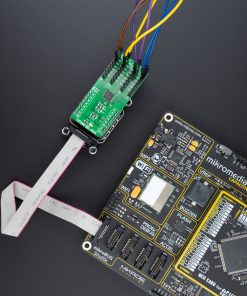Expand 12 Click is a compact add-on board that contains a multi-port I/O expander. This board features the MAX7300, a general-purpose I/O expander providing remote I/O expansion for most MCU’s families from Analog Devices. The MAX7300 comes in a 28-port configuration and allows easy addition of I/O through a standard I2C serial interface. Each port is user-configurable to either a logic input or logic output, capable of sinking 10mA and sourcing 4.5mA. In addition, seven ports feature configurable transition detection logic, which generates an interrupt upon change of port logic level. This Click board™ provides a simple solution when additional I/Os are needed while keeping interconnections to a minimum in system monitoring applications, industrial controllers, portable equipment, and many more.
Expand 12 Click is supported by a mikroSDK compliant library, which includes functions that simplify software development. This Click board™ comes as a fully tested product, ready to be used on a system equipped with the mikroBUS™ socket.
 RS485 Click 5V
1 × R235.00
RS485 Click 5V
1 × R235.00  tRF Click
1 × R1,050.00
tRF Click
1 × R1,050.00  BEE Click
1 × R800.00
BEE Click
1 × R800.00  Proximity Click
1 × R220.00
Proximity Click
1 × R220.00  EXPAND Click
1 × R260.00
EXPAND Click
1 × R260.00  MPU 9DOF Click
1 × R550.00
MPU 9DOF Click
1 × R550.00 
